Venous Treatment
Venous diseases are a subset of vascular diseases that mainly affect veins on the leg and pelvis.
These conditions not only have the potential to diminish a person’s quality of life but may also cause chronic, and possibly life-threatening complications if not managed properly. Scroll down to read about common venous treatments.
Your health is our priority.
Contact us today.
There are several methods of treatment for treating chronic venous insufficiency, varicose veins, and spider veins. Our physician will review all of your options during your consultation and will recommend the treatment(s) that are best for your specific case of venous disease. Every patient is different and at Monterey Bay Vascular our team caters to each of our specific patients’ needs.
Treatment options include:
- Radio Frequency Ablation (RFA)
- Sclerotherapy
- Venaseal
- Micro Phlebectomy
- IVC Filter
- Thrombectomy
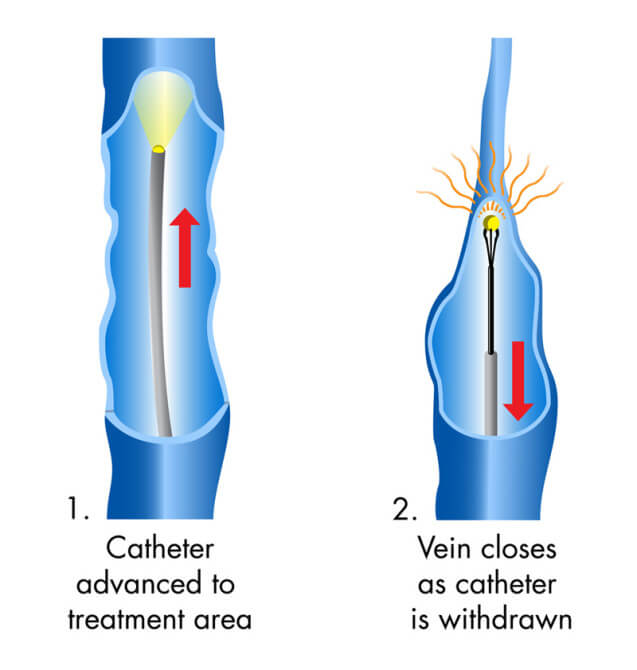
Radio Frequency Ablation (RFA)
Radiofrequency ablation is a minimally invasive, image-guided procedure used to treat varicose veins. RFA utilizes high-frequency radio waves directed through a thin tube to create intense heat within the varicose vein. The varicose vein will close, thereby preventing the flow of blood through it. With this pathway closed, blood will be forced to redirect its course and flow through other healthy vessels. This procedure eliminates the bulging, swelling, and discomfort of the varicose veins while providing an optimal passageway for blood to flow back to the patient’s heart. Performance of this operation is conducted on an outpatient basis, using local anesthesia (does not require that you are put under) with minimal recovery time and slight, but tolerable discomfort following.
VenaSeal
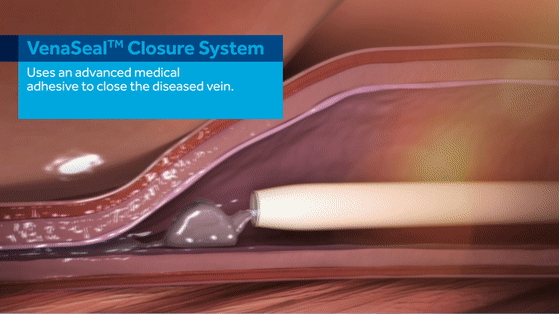
Sclerotherapy
This is another minimally invasive treatment method for venous insufficiencies such as spider, reticular, and varicose veins. The physician will begin by injecting a sclerosing solution into the affected veins. The solution causes the vein to scar. Blood is then forced to reroute itself through healthier veins. As the insufficient vein collapses, it is reabsorbed by bodily tissue and eventually disappears. Treatment typically takes place over the course of multiple sessions spanning several months before completion, depending on the extent or severity of the patient’s condition.
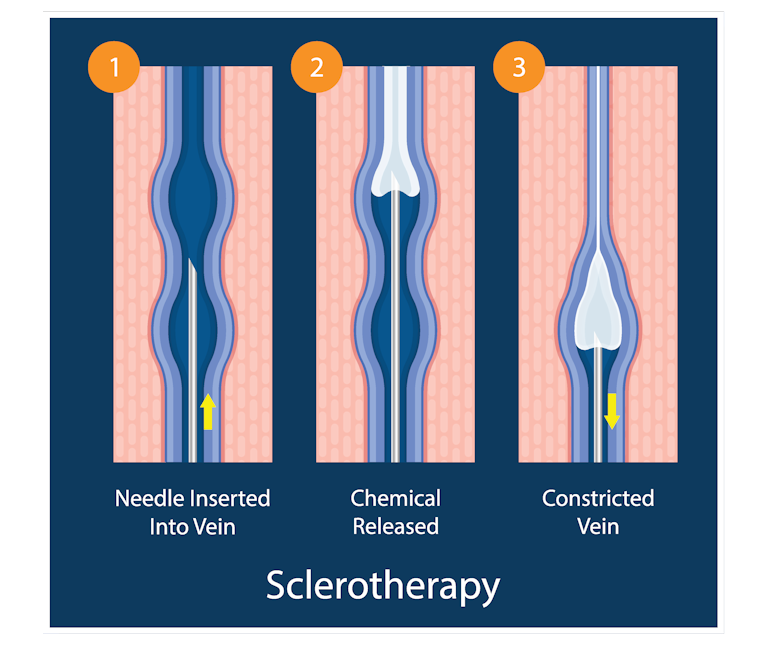
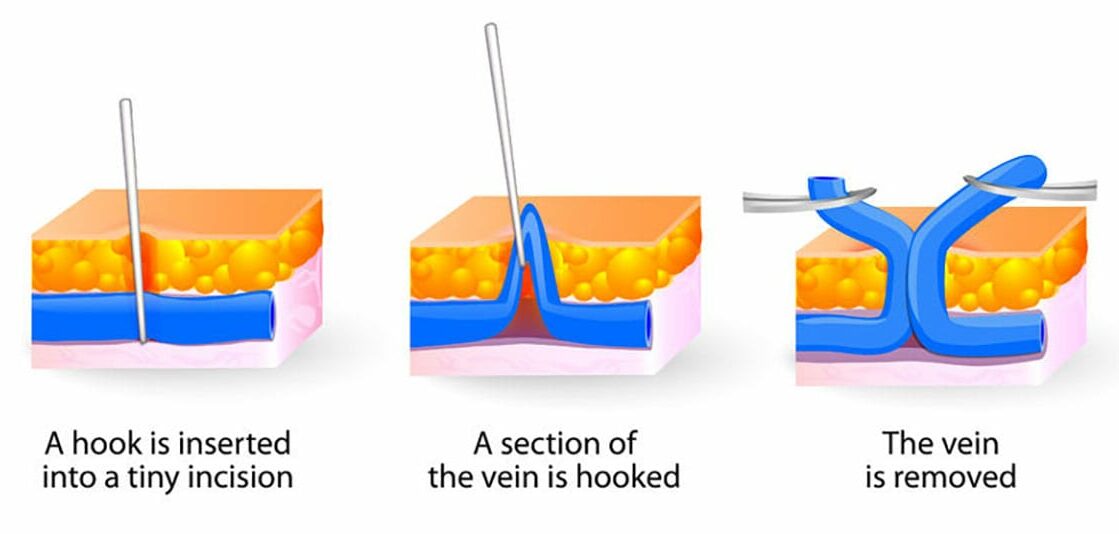
Micro Phlebectomy
This procedure removes affected varicose veins by utilizing tiny incisions made on the patient’s skin. Carried out under local anesthesia (patient is awake the whole time, with only the area under operation being numbed), it is a minimally invasive technique usually carried out on an outpatient basis.
The incisions leave very minimal scarring on the skin’s surface, or none at all in many cases. After the procedure, patients will be required to wear compression stockings for 1-2 weeks. They can resume their normal daily activities almost immediately after their appointment.
TREATMENTS FOR DEEP VEIN THROMBOSIS (DVT)
In most cases, venous treatments for patients who are diagnosed with deep vein thrombosis (DVT) includes a regimen of anticoagulants, blood thinners, and prescribed compression stockings in an effort to manage their condition.
The prescription of blood thinners and anticoagulants will keep blood clots from increasing in size or shifting into the patient’s heart or lungs. However, these medications will not eliminate the clots or ensure that additional clots do not form in the future. Our surgeon will offer patients the option of removing the DVT-affected vessels through a procedure known as a Mechanical Thrombectomy.
A thrombectomy is a surgery to remove a blood clot from a blood vessel (artery or vein). A blood clot, also known as a thrombus, can interrupt the blood flow to your extremities and/or organs that can be limb or life-threatening. Some of the most common places for blood clots to occur are your legs, arms, intestines, brain, lungs and heart.
A thrombectomy is a surgical or interventional treatment to remove blood clots in an artery or vein to help restore blood flow through your blood vessel. Sometimes a thrombectomy must be performed within a matter of hours to prevent life or limb-threatening complications from occurring.
Deep Vein Thrombosis (DVT) is a condition in which blood clots form in the veins of a person’s pelvis or legs. DVT can be extremely dangerous as patients are at high risk for an embolism. During an embolism, clots break apart and travel up the patient’s bloodstream into their lungs. This procedure will only be performed by our vascular specialists if they believe that mechanical thrombectomy or thrombolytic therapy (thrombolysis) might not be suitable for you. Click to learn more about IVC Filter Placement and Removal.
The incisions leave very minimal scarring on the skin’s surface, or none at all in many cases. After the procedure, patients will be required to wear compression stockings for 1-2 weeks. They can resume their normal daily activities almost immediately after their appointment.
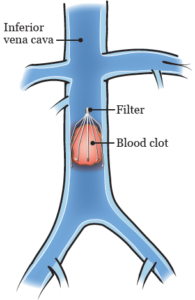
Why Monterey Bay Vascular?
At Monterey Bay Vascular, we offer coordinated care to prevent, diagnose, and treat vascular disease.
We understand, everyone deserves to live a long, happy life. Vascular disease may lead to limb loss and other life-threatening conditions such as pulmonary embolism. Our licensed vascular surgeon uses state-of-the-art tools and technology to tackle all problems related to your vascular system. Thanks to our vast wealth of experience, we also work with our patients to develop a unique solution that fits your needs. Contact us today to learn more about the vascular treatments we offer and schedule an appointment today!